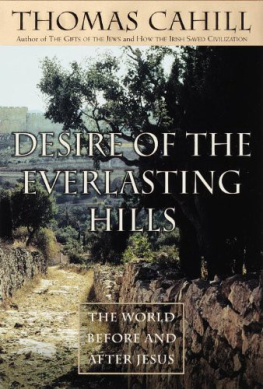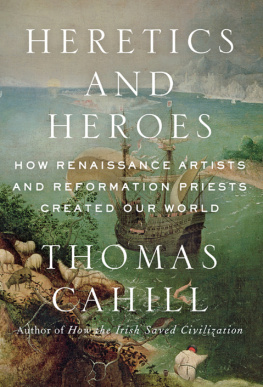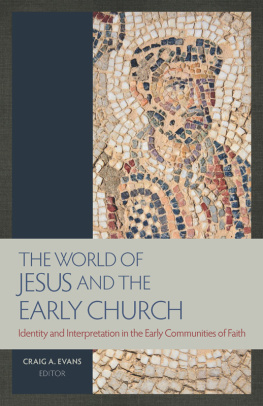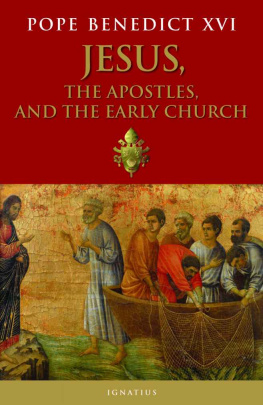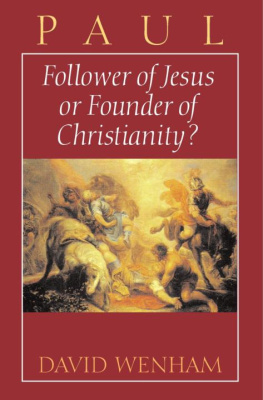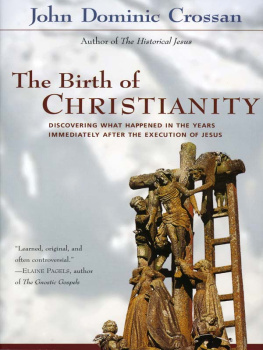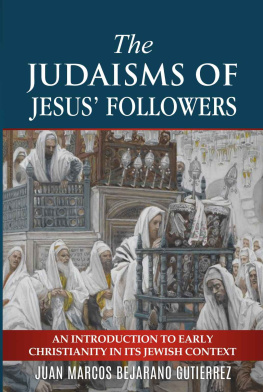FIRST NAN A. TALESE/ANCHOR BOOKS EDITION, FEBRUARY 2001
Copyright 1999 by Thomas Cahill
Excerpt from Heretics and Heroes copyright 2013 by Thomas Cahill.
All rights reserved under International and Pan-American Copyright Conventions. Published in the United States by Anchor Books, a division of Random House, Inc., New York, and simultaneously in Canada by Random House of Canada Limited, Toronto. Originally published in hardcover in the United States by Nan A. Talese/Doubleday, a division of Random House, Inc., New York, in 1999.
Anchor Books and colophon are registered trademarks of Random House, Inc.
constitutes an extension of this copyright page.
The Library of Congress has cataloged the Nan A. Talese/Doubleday edition as follows:
Cahill, Thomas.
Desire of the everlasting hills : the world before and after Jesus/Thomas Cahill. 1st ed. in the U.S.A.
Includes bibliographical references and index.
p. cm.
eISBN: 978-0-307-75510-0
1. Jesus Christ Biography. I. Series: Cahill, Thomas. Hinges of history; v. 3.
BT301.2.C34 1999b
232dc21 99-16560
CIP
Book design by Marysarah Quinn Maps by Jackie Aher
www.anchorbooks.com
v3.1_r1

Early Christians celebrating the Eucharistic Banquet, or Lords Supper, found in the Catacombs of San Callisto.

Early Christians celebrating the Eucharistic Banquet, or Lords Supper, found in the Catacombs of San Callisto.
TO JOEY
Christ minds: Christs interest, what to avow or amend
There, eyes them, heart wants, care haunts, foot follows kind,
Their ransom, their rescue, and first, fast, last friend.
Never have I hoped in any but thee, God of Israel, who will grow wroth and yet once more be merciful, forgiving all the sins of human beings because of our suffering.
MEDIEVAL CHRISTIAN RESPONSORY TO THE BOOK OF JUDITH
Christianity, too, is a form of Judaism.
RABBI SHAYE J. D. COHEN
Contents
INTRODUCTION
What Do the Everlasting Hills Desire?
I: GREEKS, JEWS, AND ROMANS
The People Jesus Knew
II: THE LAST OF THE PROPHETS
The Jesus the Apostles Knew
III: THE COSMIC CHRIST
Pauls Jesus
IV: THE GENTILE MESSIAH
Lukes Jesus
V: DRUNK IN THE MORNING LIGHT
The People of the Way
VI: THE WORD MADE FLESH
The Jesus the Beloved Disciple Knew
VII: YESTERDAY, TODAY, AND FOREVER
The World after Jesus
Introduction
What Do the Everlasting Hills Desire?


H ISTORY HAS MUCH TO DO with hills. From the David built Jerusalem to the Athenian Acropolis, from Bunker Hill of the American Revolution to Malvern Hill of the American Civil War, from Iwo Jimas Mount Suribachi to Vietnams Hamburger Hill, the hills of this world have been prized. Much of humanitys recorded story has taken place on their flanks and summits, and how much blood, of both conquerors and conquered, has been absorbed by their accommodating soils no one can say.
In Janiculum, which the ancients called the Golden Mountain because of its yellow sand. One of the splendid natural defenses of Rome, it is a ridge that rises steeply from the west bank of the sludge-green Tiber and gives spectacular views of the great city that is spread beneath it. Like other strategic hills, it has known many battles.
It was just a century and a half agoin 1849that armies last clashed on its summit around the ornamental Renaissance arches of the Gate of San Pancrazio and in and out of the charming medieval buildings that lie beyond the gate and on whose walls one can still discern the work of bullets. What the bullets did to the men who fought here has long been concealed by earth. The winners were French troops in service to a reactionary pope, outraged that Italians would dare take up arms against him in their attempt to dissolve the Papal States and unite Italy. The losers were boys as young as fourteen, tragically Vatican, to which the popes vestigial temporal power has been confined since 1870. The dead child-soldiers have no monument in marble or bronze, just a street signPiazzale dei Ragazzi di 1849 (Great Square of the Boys of 1849)but their spirits haunt the slender umbrella trees that cluster mournfully in the Villa Doria Pamphilj, the vast seventeenth-century parkland that runs beside the scene of their deaths, where dirt paths are named in their memory and the boys of contemporary Rome kick footballs and fly kites.
The their lately acquired refinements, Oriental merchants speaking languages but dimly understood, Africans of every kindEgyptians, Berbers, Nubiansand Jews with uncut beards, the whole babble contained within Trasteveres narrow streets whose haphazard apartment buildings, designed to cram in as many souls as possible, leaned over the filthy streets, nearly blocking out the sky. Trastevere (in those days Trans Tiberim, the Place-across-the-Tiber) was exciting and a little dangerous, as it remains today, a place where basic cravingsfor food, sex, revengecan spurt unexpectedly into view.
It is instructive to select one or two of these groups of migrating visitors and see how they fared in subsequent ages. The Jews, for instance, have now been in that distinguished the graves of ancient Jews, as well as the doves and ships of those Jewsa minority within a minoritywho were members of a primitive Christian community, the first to be established at Rome, probably in the fourth decade of the first century.
In the Middle Ages, the community of Jews crossed the river to the huddled quarter that is still called the Ghetto; and from the slopes of the Janiculum there are fine views of the silvery Synagogue, built at the beginning of this century near the site of its several, much smaller predecessors, the four corners Janiculum, won belated freedom and civil rights for all the citizens of Rome.
Shades of my own ancestors haunt the prospect from the Janiculum. Looking out across the valley in the hour before dawn, I can imagine there appearing on the northeast horizon bands of naked, mustachioed Celts, the locks of their lime-washed hair standing up on their heads, an immense host, covering miles of ground with its straggling masses of horse and foot, as the Roman historian Livy described them. Early in the fourth century B.C. they rode their horses into a much smaller Rome, causing panic and flight among the inhabitants. The air, wrote Livy, was loud with the dreadful din of the fierce war-songs and discordant shout of a people whose very life is wild adventure. All who did not flee before the marauders hid themselves within the fortifications of the Capitoline Hill, save for the elderly, who could not climb and were slaughtered on their thresholds. Then, waiting for the dead of night, the barbarians almost made it up the Capitoline itself, climbing the stones that face the hill on one anothers shoulders in an eerie silence no one thought them capable of. But at the last moment, just when the first of the invaders had reached the summit, the geese of the Capitoline, sacred to Juno whose temple stood on the heights, honked their frantic warnings, and the Celts were cut down. If I could examine the genetic cells of these fierce warriors, I could establish kinship.

